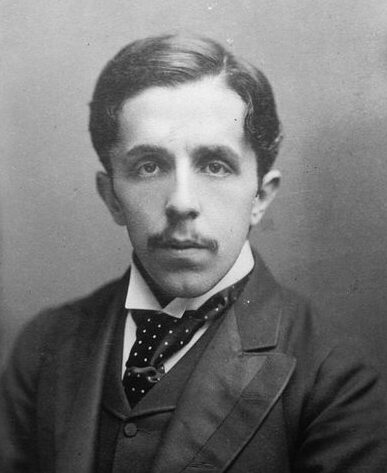Old Palace is a site of amazing history stretching back to the 9th century. Not many schools can boast a classroom that was once Queen Elizabeth I’s bedroom.
The site of Croydon Minster has been a place of learning and worship since 896 AD.
As for the School building itself, it was for centuries the summer palace of the Archbishops of Canterbury. It was one of ten places they maintained between Lambeth and Canterbury, each one a manageable day’s ride apart, and it is by far the best preserved.
It began life as a manor house in the 12th century at least (the undercroft, now the staff room, is of that period), but it was during the 15th century that the core of today’s palace was built. The Guardroom – once a reception room, now a library – dates from the time of Archbishop Thomas Arundel (1396-1414), and is one of the earliest uses of brick in Britain.
A few decades later Archbishop John Stafford built what is now one of the finest medieval great halls left in southern England. Under its high arched-brace roof, Henries VI and VII and Queens Mary and Elizabeth dined, each sitting on Stafford’s stone throne, part of which survives against the west wall. Elizabeth made numerous visits, most notably for seven days in July 1573. By this time the palace was, with a bit of pushing and shoving, able to accommodate all her courtiers and followers, plus “groomes of the privye chamber, physycyons, and wayghters”. Her bed, always travelling with her, was set down in what is now known as Queen Elizabeth’s room, a large 15th century first-floor space, with fine moulded ceiling joists. It was built by Archbishop John Morton, one of the wealthiest of all archbishops, and the man who created the original royal palace near Hatfield House.
There are other parts that fascinate (such as the Long Gallery, originally 16th century, but enclosed and glazed 300 years later and only recently restored), but none is such a cabinet of curiosities as the chapel. It dates from the 15th century, and was sufficiently altered two hundred years later to give, at first glance, every appearance of being built at that time. It houses a number of curios, the most outstanding of which, angled across the north-west corner, is a gallery pew in dark oak. It is reached either by a doorway on the first floor, or by a narrow little staircase from the chapel floor. Often referred to as ‘Queen Elizabeth’s Pew”, it was almost certainly built by William Laud, the archbishop executed during the Civil War. Beneath this is a Norman font, not original to Croydon, but a gift in Victorian times from St George’s Church, Southwark. Thus, in the chapel of this Croydon girls’ school, is the font where Charles Dickens had Little Dorrit christened.
Yet there is nothing more remarkable about the palace than its survival. By the mid-eighteenth century, their graces were finding it too damp, and a place where, as Croydon developed, the hoi poloi were getting uncomfortably close. So land a few miles to the south was bought, Addington Palace built, and the old premises abandoned. In 1780 it was sold off, and might then easily have been knocked down and a belching brewery put in its place. But it escaped demolition in exchange for the indignity of becoming, successively, a linen printers, bleaching works, and laundry. There is a 19th century engraving showing the Great Hall, where Queen Elizabeth once held court, reduced to a barn, complete with haycart, piles of brushwood, and a chicken coop.Successive owners chivvied away a bit at the redundant palace’s ancient fabric, but did no great damage.
Thus, when it came on the market again, in an era more likely to appreciate its connections, it was bought by the Duke of Newcastle (aged just 21), who gave it to the Sisters of the Church.

Duke of Newcastle
By 1889, they had founded the school which prospers here today.
The school became part of the John Whitgift Foundation in 1993 and changed its name to Old Palace of John Whitgift School.
To visit and learn more about the history that has occurred within the walls of the Palace, please go to http://www.friendsofoldpalace.org/palacetours.htm
Katherine of Aragon at Croydon Palace
The guest speaker at the Alumnae 81-86 Reunion was the historical novelist Alison Weir. Although not an alumna herself, she has a close connection with the school, in that her daughter is an alumna. Here she describes how Katherine of Aragon lived at the ‘Old Palace’ for much of the year 1502.
It is often stated that Henry VIII’s first queen, Katherine of Aragon, lived At Durham House, the Bishop of Durham’s palace on London’s Strand, after the death of her first husband, Arthur Tudor, Prince of Wales in April 1502. In fact, Henry VII gave the young widow – she was sixteen – the choice of two residences: Durham House and Croydon Palace, the Archbishop of Canterbury’s residence in Surrey. Katherine chose Croydon and, by 4 May, was lodging there.
